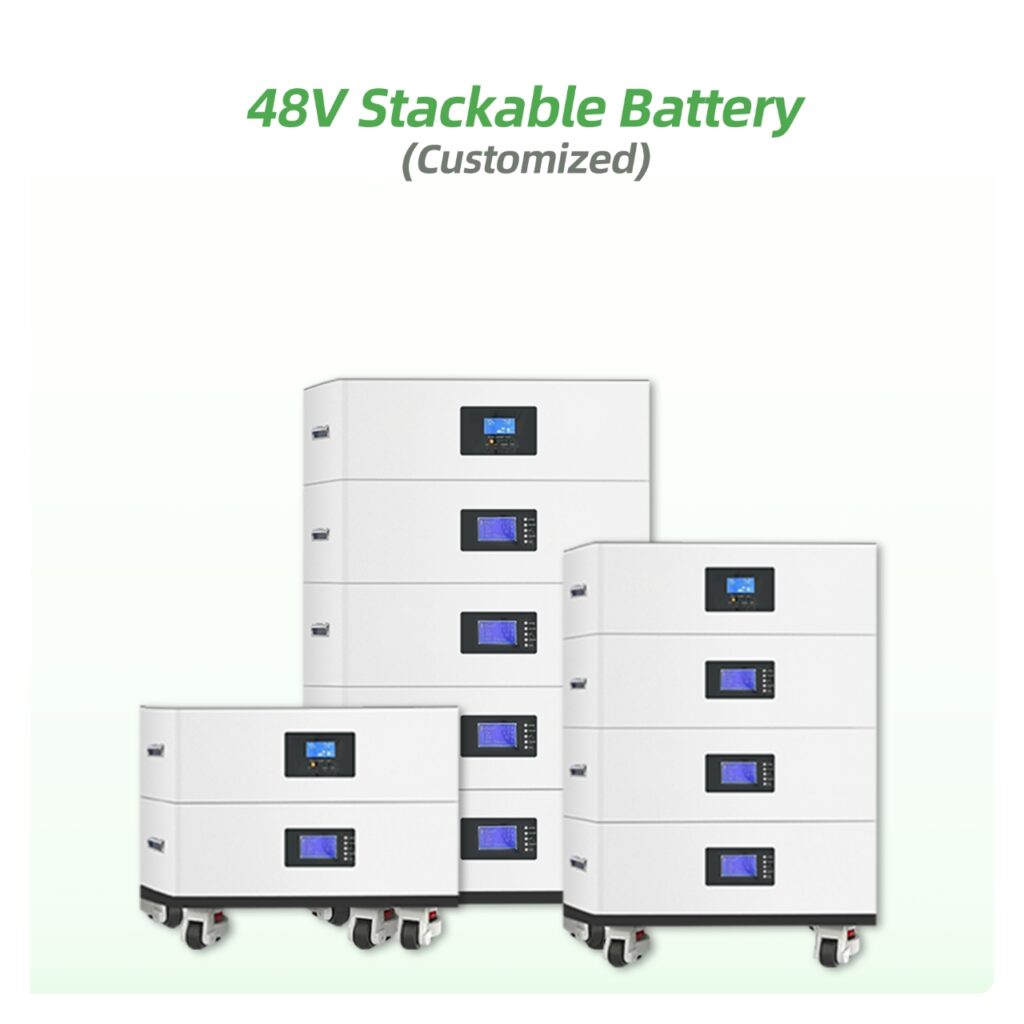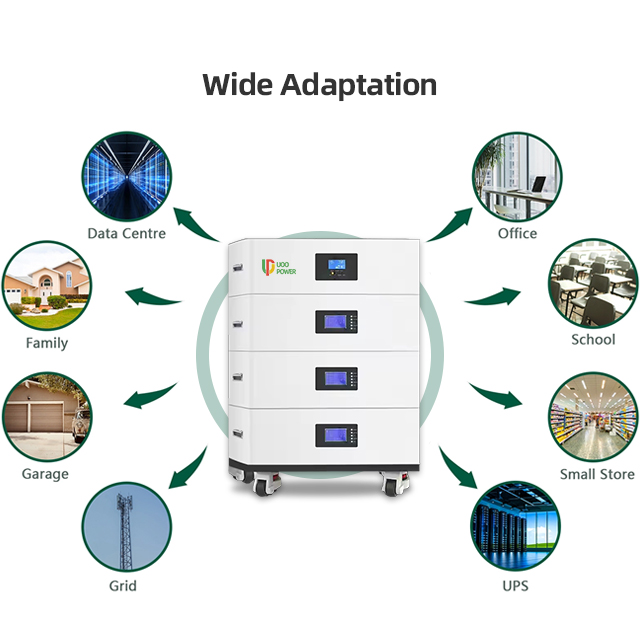
Selection of lithium-ion batteries
– Battery Type:In home solar energy storage systems, lithium iron phosphate batteries are the mainstream choice.
– capacity calculation:Determine according to factors such as users’ power consumption needs, expected self – consumption rate or off – grid backup power duration, and photovoltaic power generation capacity. The calculation formula is “Battery capacity (kWh) = Expected daily power consumption (kWh) × Expected backup days / Depth of Discharge (DOD) / System efficiency”.
– Voltage platform:It needs to be strictly matched with the inverter. Common voltage levels are 48V, 96V, 192V, etc.
– Charge and Discharge Ratio:It determines the maximum charging and discharging power. Power (kW) = Capacity (kWh) × Rate (C). The common continuous charging and discharging rate is 0.5C.
– Cycle life and warranty:Give priority to products with a high – nominal number of cycles (such as more than 6000 times @ 80% DOD, 25°C) and that provide clear warranty terms for capacity or energy throughput.
– degree of integration:Integrated units (battery + built – in BMS + inverter) are easy to install, while split – type (battery cluster + independent inverter) is more flexible and suitable for large – scale systems.
– communications protocol:It must be compatible with the inverter, such as CAN, RS485, Modbus TCP, etc.
Inverter selection
– Type Selection:Hybrid inverters integrate photovoltaic MPPT and battery charging and discharging management, suitable for DC – coupled systems; energy storage inverters are specialized in managing battery charging and discharging, commonly used in AC – coupled systems.
– power matching:It must meet both the maximum input power of the photovoltaic array and the maximum power demand of the load, or comply with the grid – connected power limit.
– Battery compatibility:Clearly support the voltage range and communication protocol of lithium iron phosphate batteries.
– Charge and Discharge Power:Select according to requirements and battery specifications. It determines the charging and discharging speed of the battery and affects the peak – shaving and valley – filling ability.
– Charge and Discharge Strategy:Choose an inverter that supports modes such as time control, priority of self – generation and self – consumption, and backup power supply.
– off-grid capability:If a backup power function during power outages is required, an inverter with off – grid output function should be selected.
– efficiency:Pay attention to the maximum efficiency and European efficiency. High – efficiency inverters can reduce energy losses.
– protection class:If installed outdoors, an inverter with a high protection level should be selected.

